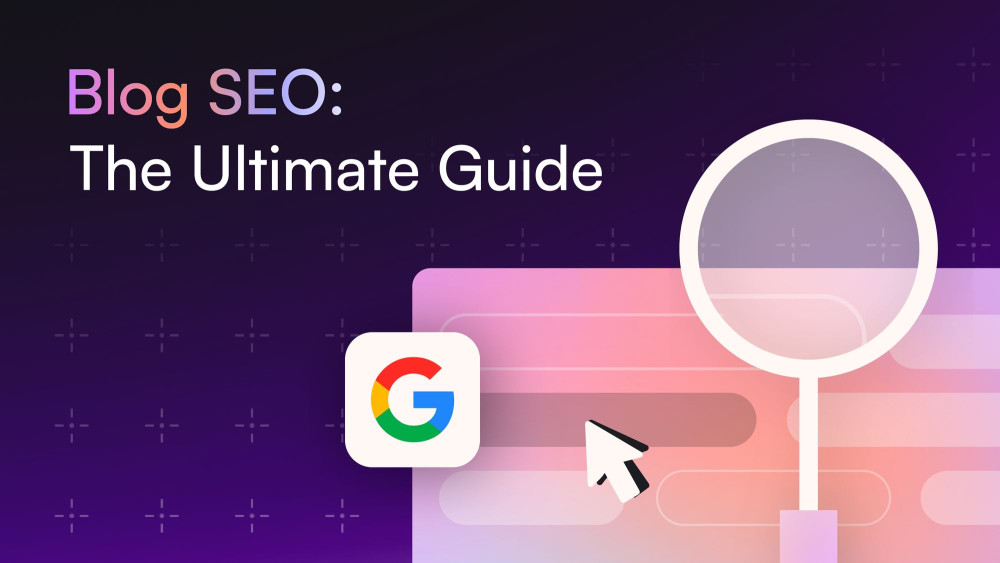Blog SEO: Your Guide to Optimizing a Blog for Search Engines
In today's digital landscape, having a blog is essential for establishing an online presence and engaging with your audience. However, simply having a blog isn't enough; you need to ensure that your blog is optimized for search engines to attract organic traffic and improve your visibility. This comprehensive guide will walk you through the key aspects of blog SEO and provide actionable tips to help you optimize your blog for search engines.
Why Blog SEO Matters
Blog SEO (Search Engine Optimization) involves optimizing your blog content and structure to improve its visibility on search engine results pages (SERPs). Effective blog SEO helps drive more organic traffic to your site, enhances user experience, and ultimately increases your chances of converting visitors into customers.
Step-by-Step Guide to Blog SEO
Step 1: Conduct Keyword Research
Why It Matters: Keyword research is the foundation of SEO. It helps you understand what your audience is searching for and allows you to create content that meets their needs.
How to Do It:
- Identify Core Topics: Start by brainstorming topics related to your niche.
- Use Keyword Tools: Utilize tools like Google Keyword Planner, SEMrush, or Ahrefs to find relevant keywords.
- Analyze Search Intent: Understand the intent behind the keywords to ensure your content matches what users are looking for.
Step 2: Optimize On-Page Elements
Why It Matters: On-page SEO involves optimizing individual pages to rank higher and earn more relevant traffic in search engines.
How to Do It:
- Title Tags: Include your primary keyword in the title tag and keep it under 60 characters.
- Meta Descriptions: Write compelling meta descriptions (under 160 characters) that include your target keywords.
- Headers (H1, H2, H3): Use headers to structure your content and include relevant keywords.
- URL Structure: Keep URLs short, descriptive, and keyword-rich.
Step 3: Create High-Quality Content
Why It Matters: High-quality content is crucial for engaging your audience and encouraging them to stay on your site longer, which positively impacts your SEO.
How to Do It:
- Write Informative and Engaging Content: Ensure your content provides value, answers questions, and solves problems for your readers.
- Use Keywords Naturally: Integrate your keywords naturally within the content without keyword stuffing.
- Include Visuals: Use images, videos, and infographics to make your content more engaging and shareable.
Step 4: Improve Site Structure and Navigation
Why It Matters: A well-structured site with easy navigation improves user experience and helps search engines crawl and index your pages more efficiently.
How to Do It:
- Create a Logical Hierarchy: Organize your content into categories and subcategories.
- Use Internal Linking: Link to other relevant posts within your blog to keep readers engaged and improve crawlability.
- Optimize for Mobile: Ensure your blog is mobile-friendly, as mobile optimization is a key ranking factor.
Step 5: Enhance Page Load Speed
Why It Matters: Page load speed is a critical factor for both user experience and SEO. Slow-loading pages can lead to higher bounce rates and lower rankings.
How to Do It:
- Compress Images: Use tools to reduce the file size of images without sacrificing quality.
- Enable Browser Caching: This allows your site to load faster for returning visitors.
- Minimize JavaScript and CSS: Reduce the number of scripts and stylesheets to decrease page load times.
Step 6: Build Backlinks
Why It Matters: Backlinks from reputable sites signal to search engines that your content is credible and authoritative, which can improve your rankings.
How to Do It:
- Guest Posting: Write guest posts for reputable blogs in your niche.
- Outreach: Reach out to influencers and other bloggers to share your content.
- Create Shareable Content: Produce high-quality, shareable content that naturally attracts backlinks.
Step 7: Monitor and Analyze Your SEO Performance
Why It Matters: Regularly monitoring your SEO performance helps you understand what’s working and what needs improvement.
How to Do It:
- Use Analytics Tools: Google Analytics and Google Search Console provide insights into your traffic, keywords, and performance.
- Track Key Metrics: Monitor metrics such as organic traffic, bounce rate, and keyword rankings.
- Adjust Your Strategy: Based on your analysis, make necessary adjustments to your SEO strategy to continue improving your blog’s performance.
Optimizing your blog for search engines is an ongoing process that requires attention to detail and a commitment to providing valuable content. By following this guide, you'll be well on your way to improving your blog's SEO, attracting more organic traffic, and ultimately achieving your online goals.


